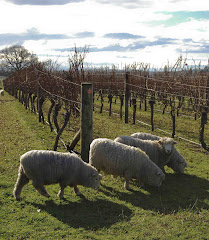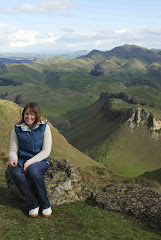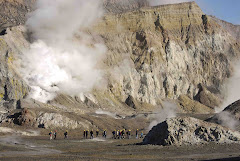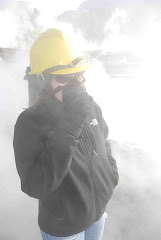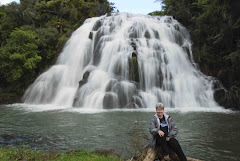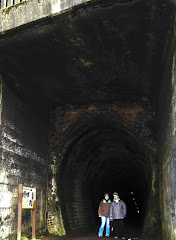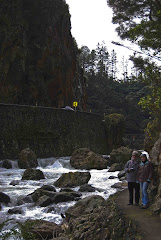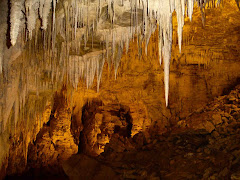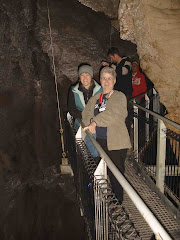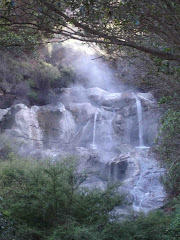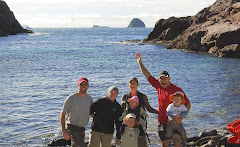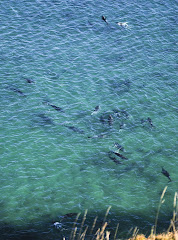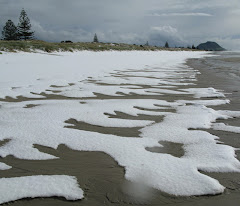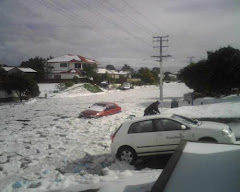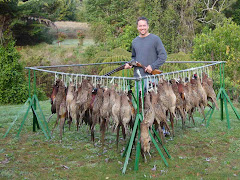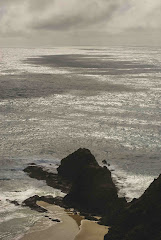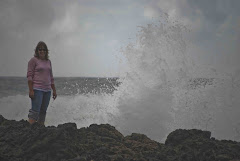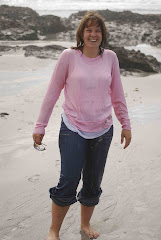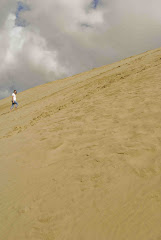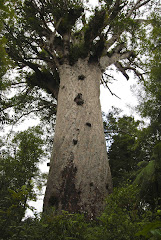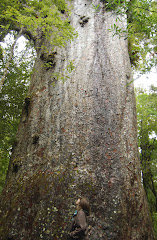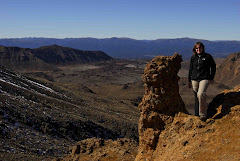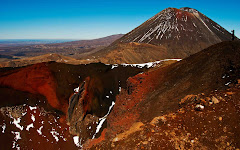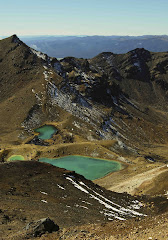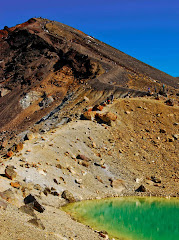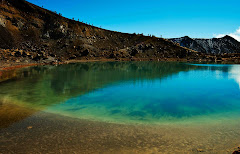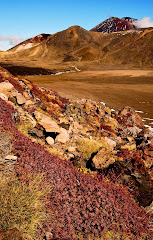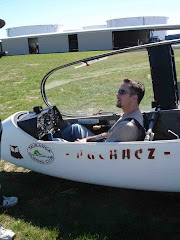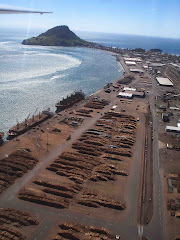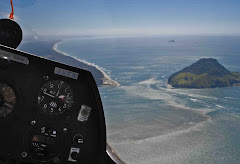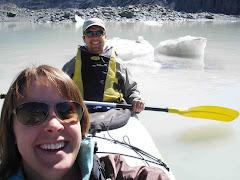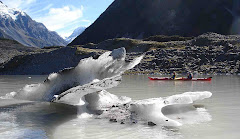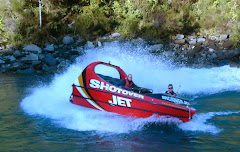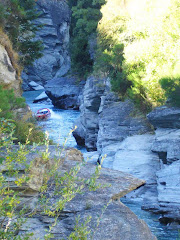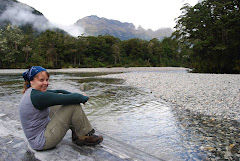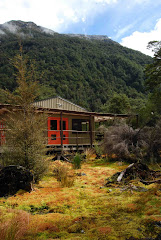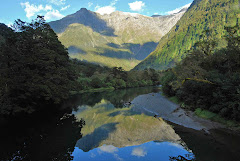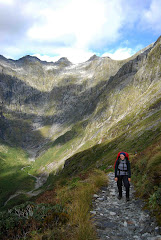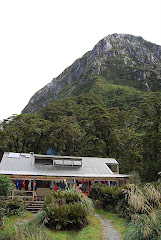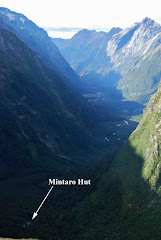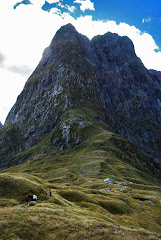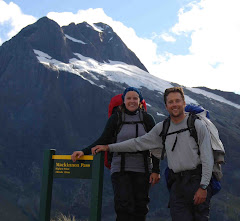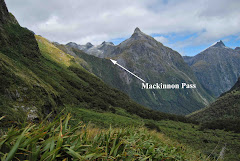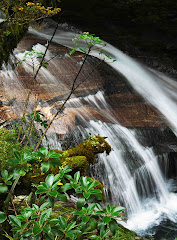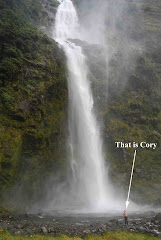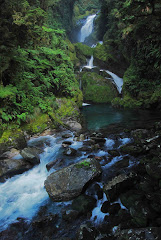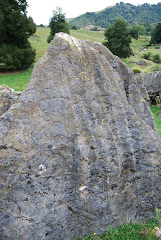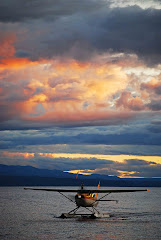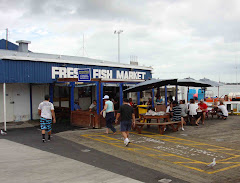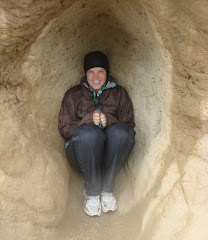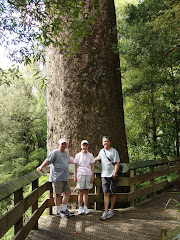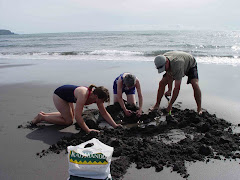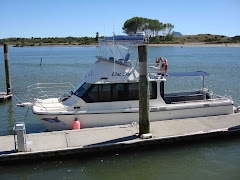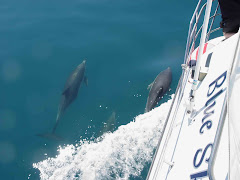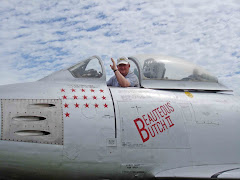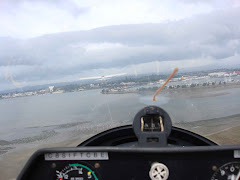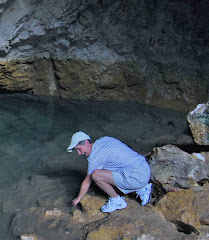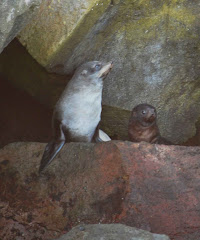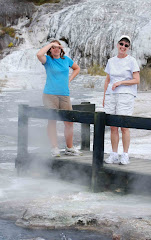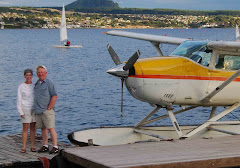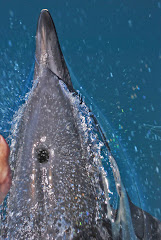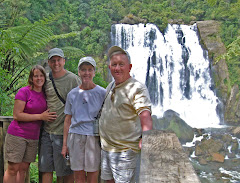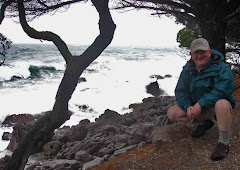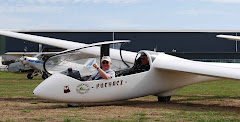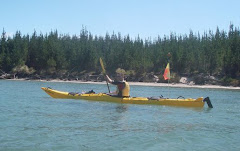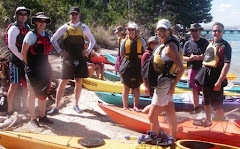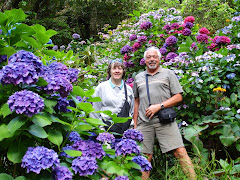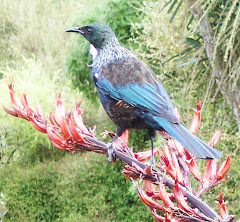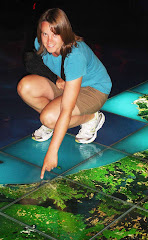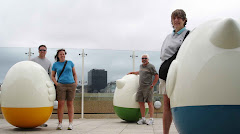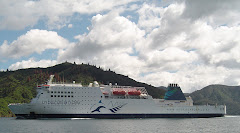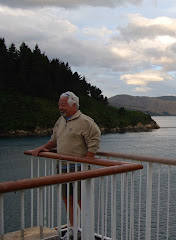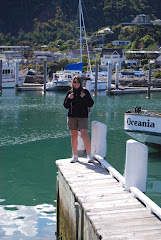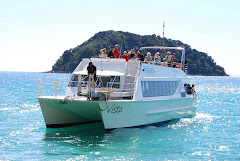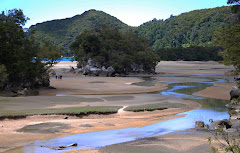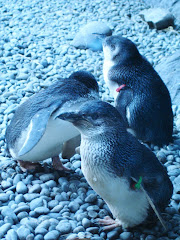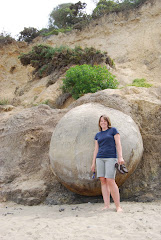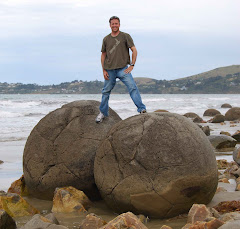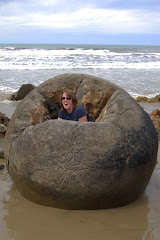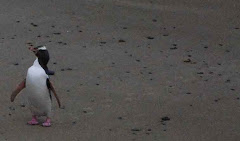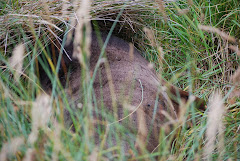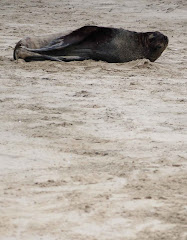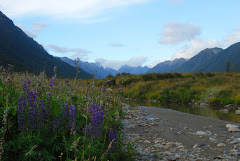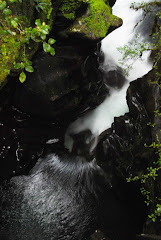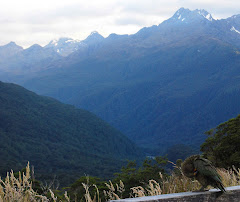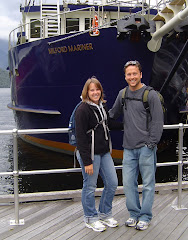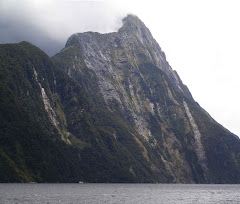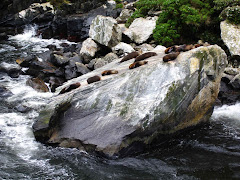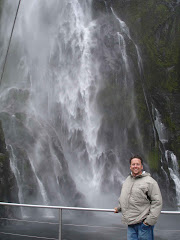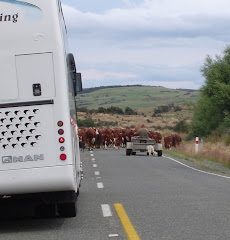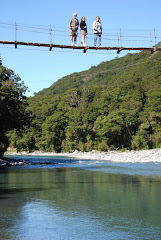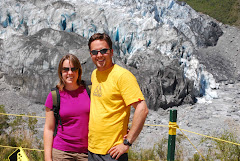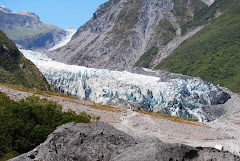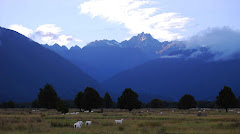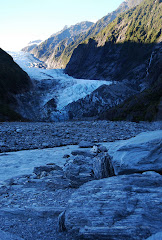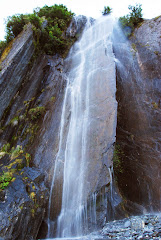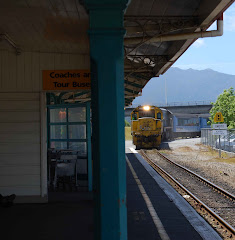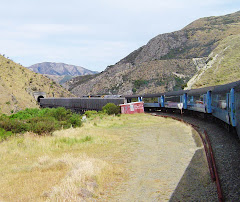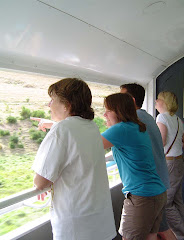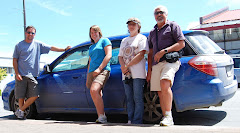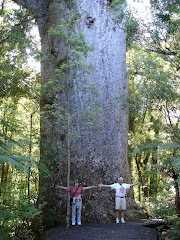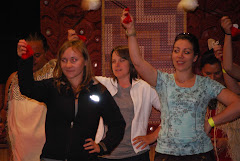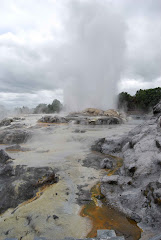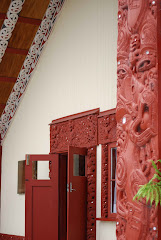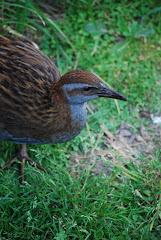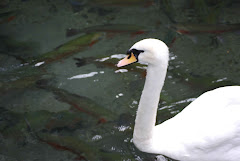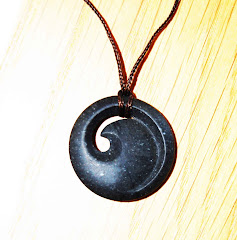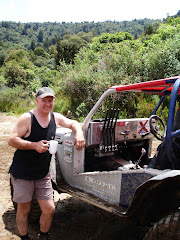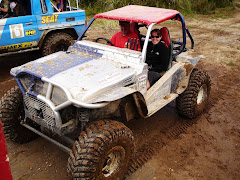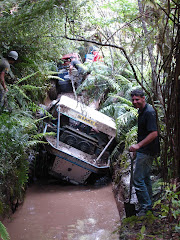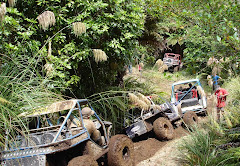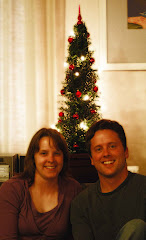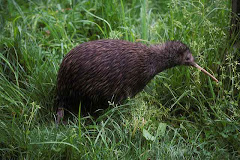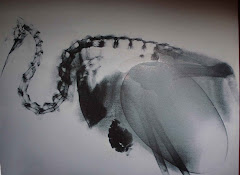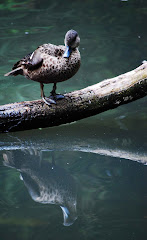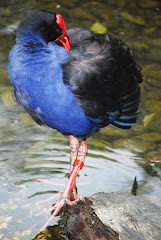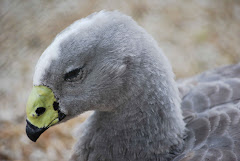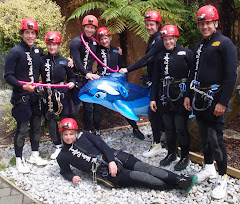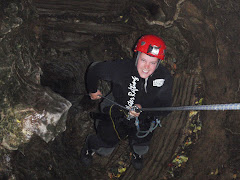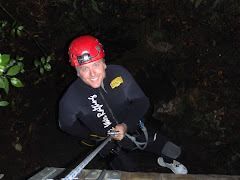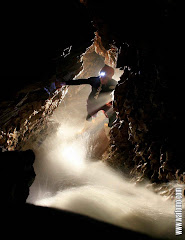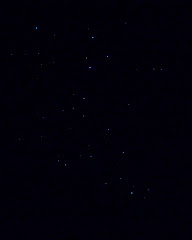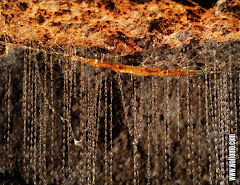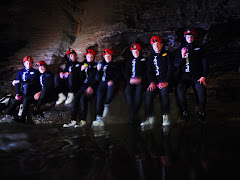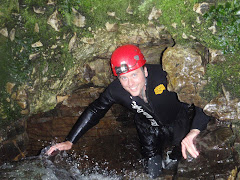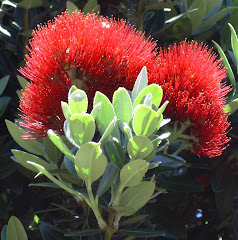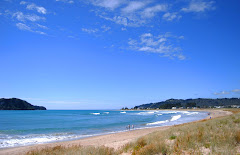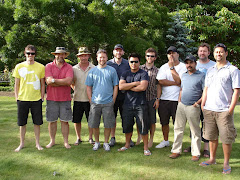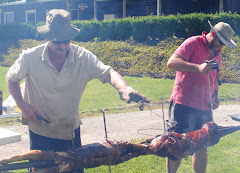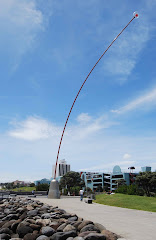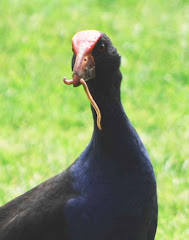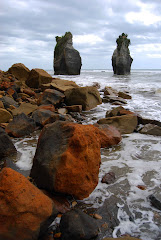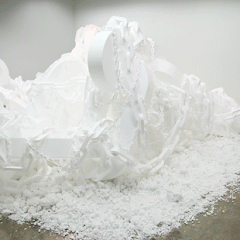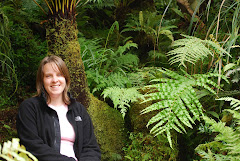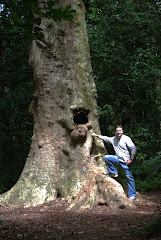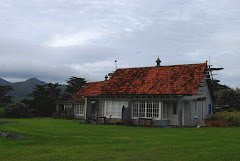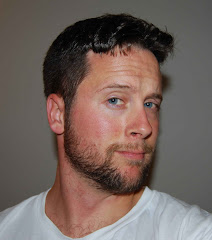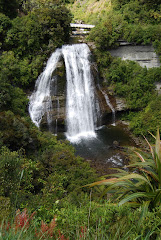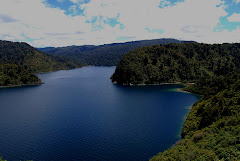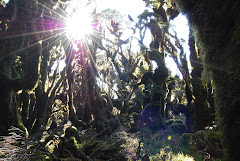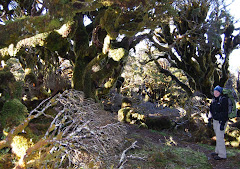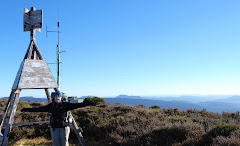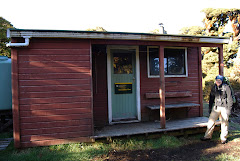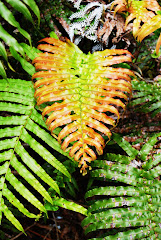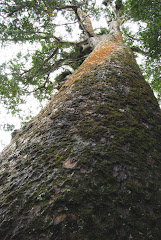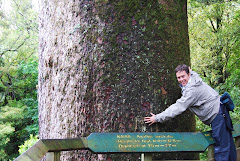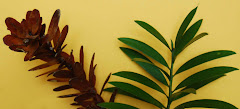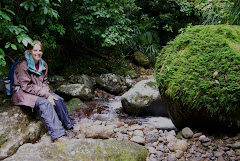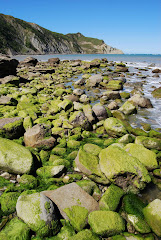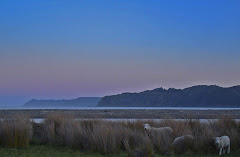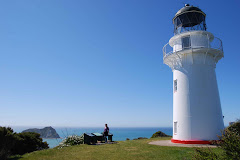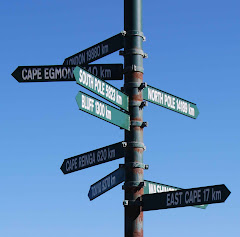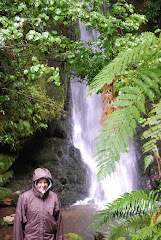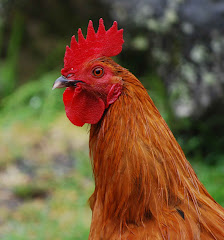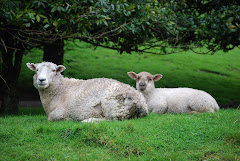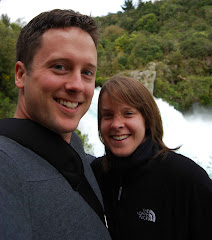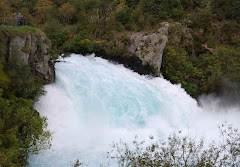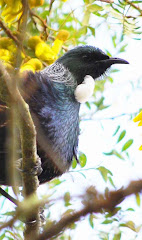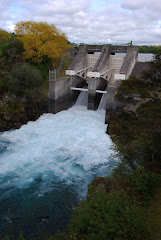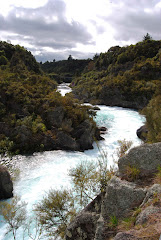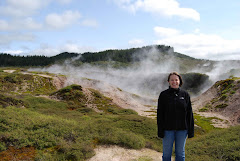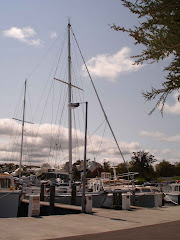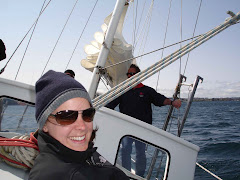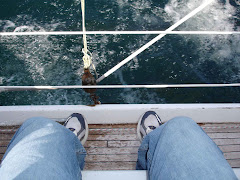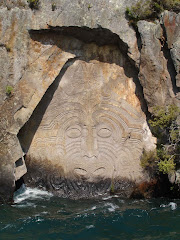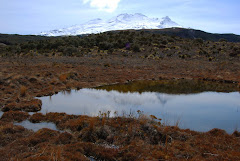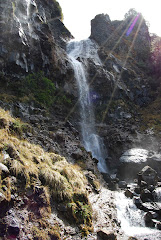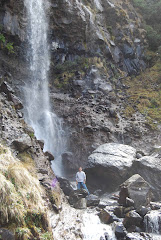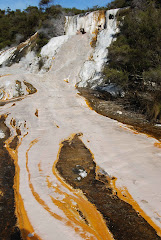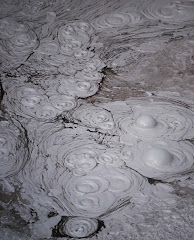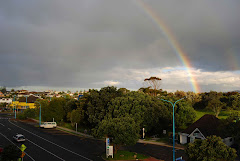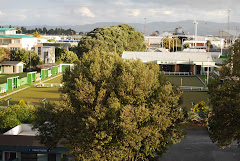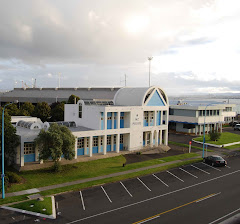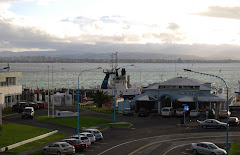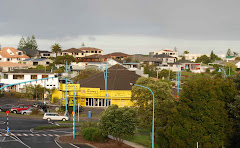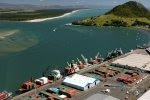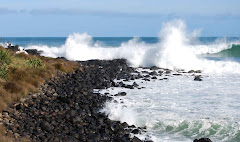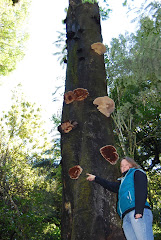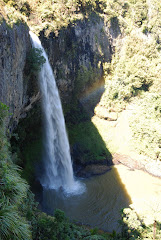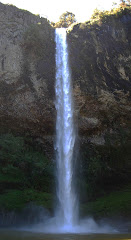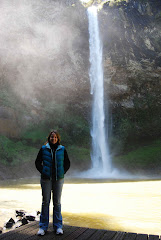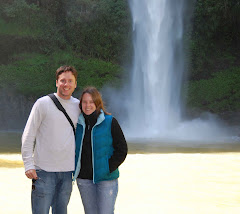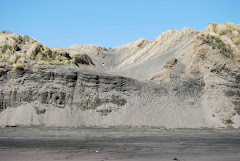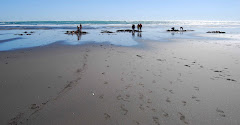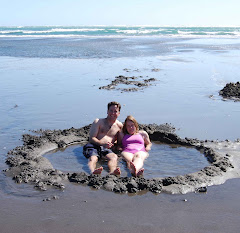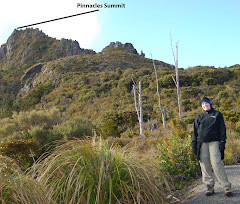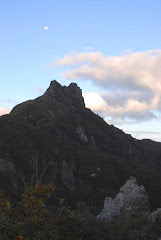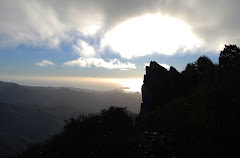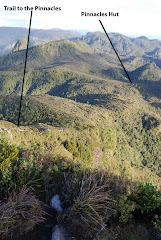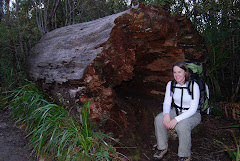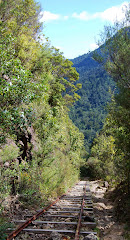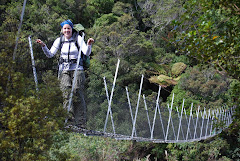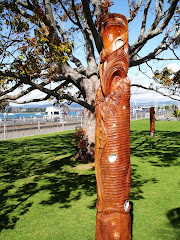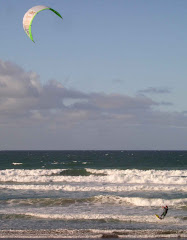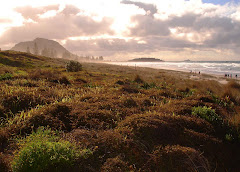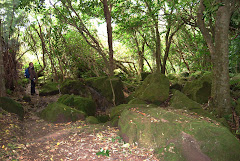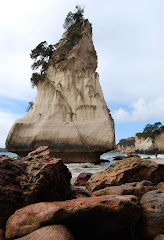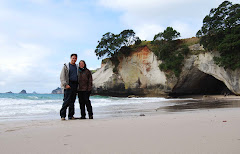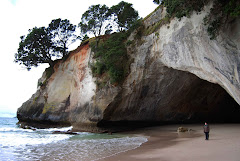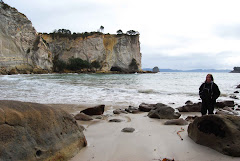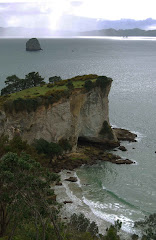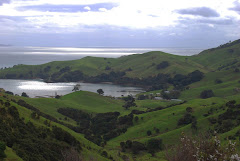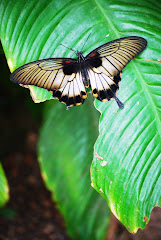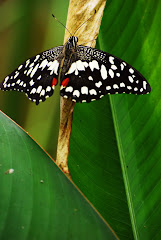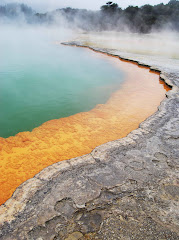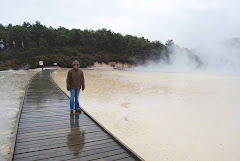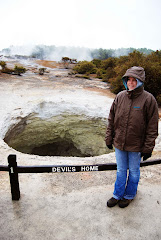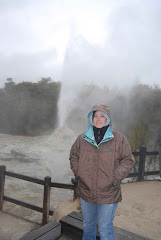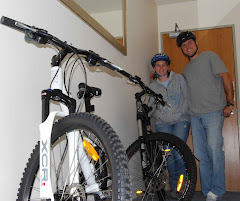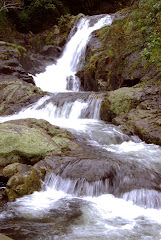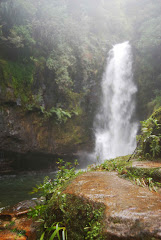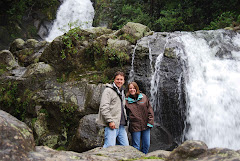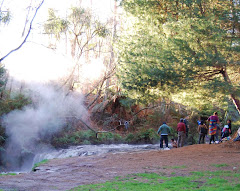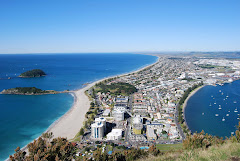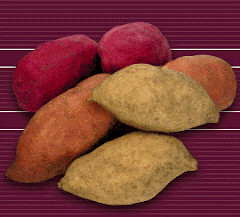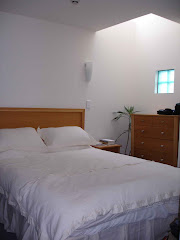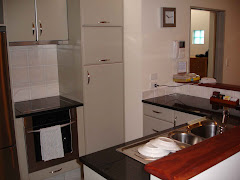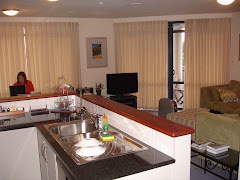With our departure date now cemented, Cory and I are looking at our “to do” list of travel and realizing there are still some things we’d like to see and do here in New Zealand – and that time is ticking!
With that in mind, we decided it was time for a trip to the Northlands, the area north of Auckland. Specifically, we wanted to visit Cape Reinga, which is on the tip of the northern peninsula. (It is not actually the northern most point, but it’s pretty darn close.) Here, the waters of the Tasman Sea and the Pacific Ocean meet.
We took off Friday night, knowing we had some driving to do. All evening we traveled through heavy rain. After an overnight stop, we headed on. Further and further north we went, reading through the rain the signs that continued to announce the “last” of available conveniences…“the last petrol stop”; “the last tavern”; and “the last store.” On the map, the “last pub” was indicated, but this was some kilometers south of the last tavern, so I’m sure there is a battle in naming rights going on somewhere. Or perhaps if you designate yourself as a tavern, you are different than the last pub, the last bar, the last watering hole, and the last saloon.
As if on purpose, the rain slowed to a drizzle and then, finally, we were able to turn the wipers off all together. We drove the last bit up to Cape Reinga, and, by the time we had arrived, the sun was out and the weather was beautiful.
We walked out to the lighthouse that had been erected on the point and looked down over the two colliding seas. Waves from the west rolled over waves from the east, creating little eddies and whirlpools.
Besides being geographically interesting, the Cape is also an area held sacred by Maoris. It is here, from a lone pohutukawa tree, that the departing spirits of the dead make their way to the spirit world. The pohutukawa tree clings to a little rocky cliff, jutting out into the two oceans. Standing above cliff, looking down on the tree from a distance, you can see why a spirit would pick this place to fly from.
After enough gazing from a distance, we headed down to a nearby bay to watch the waves come in. The waves were crashing into the shore, especially along the rocky area, with a dramatic noise and foamy spray. We wandered out to a rocky area to check out the tide pools and then strolled back along the water’s edge. As we came to another rocky area, Cory suggested we head up towards the shore to avoid being caught by a wave.
I probably should’ve listened to Cory, but I didn’t. The first little wave brushed at my feet, as the others had, but the next two soaked me to the thigh. The third swept my feet out from underneath me, and I was left gasping in surprise, trying to keep my head above water. I was drenched and coated with sand. And laughing. Luckily, I had some spare clothes and there was a shower at a nearby campsite. Otherwise, I don’t think Cory would’ve let me in the car.
Having just gotten all the sand off me, we decided we had better check out the giant sand dunes on the west coast as we headed back down the peninsula. No one was surfing or tobogganing, but you could have. The dunes stretched as far as you could see; we climbed up one, only to see others unfold in front of us.
The next day we traveled through a kauri forest, gaping at the girth of the largest trees in New Zealand. Then it was time to head home again. A long drive awaited us. We arrived home in the dark and experienced that warm feeling of being home again…
Tuesday, April 28, 2009
Saturday, April 18, 2009
Planning for our return
Just wanted to give you an update on our plans for our return to Iowa… Many of you have asked if we are really coming back, and, yes, we are coming home!
Cory will be working at Steindler Orthopaedic Clinic in Iowa City (with one day of clinic down in Muscatine). I’ll be teaching English at Cedar Rapids’ alternative high school, Metro. We are both excited and anxious to begin our new jobs!
We’ve been looking at houses on line, which, as you might imagine, is a challenge. Our parents have gone out with the realtor and looked at a few houses for us. We’re not sure if we’ll buy while we’re still overseas, but if something works out, then I guess we might! Otherwise, we’ll just rent ‘til we get things sorted out.
We also just bought plane tickets for our return. We plan on flying into Iowa on July 9th!
Can’t wait to see you all again!
Cory will be working at Steindler Orthopaedic Clinic in Iowa City (with one day of clinic down in Muscatine). I’ll be teaching English at Cedar Rapids’ alternative high school, Metro. We are both excited and anxious to begin our new jobs!
We’ve been looking at houses on line, which, as you might imagine, is a challenge. Our parents have gone out with the realtor and looked at a few houses for us. We’re not sure if we’ll buy while we’re still overseas, but if something works out, then I guess we might! Otherwise, we’ll just rent ‘til we get things sorted out.
We also just bought plane tickets for our return. We plan on flying into Iowa on July 9th!
Can’t wait to see you all again!
Tuesday, April 14, 2009
Happy Easter!
Easter Friday and Easter Monday are holidays here, and while Cory was on call on Friday, he did have Monday off. So we thought we’d better squeeze in a trip down to the Tongariro Mountain Range. We’d been hoping to do the Tongariro Crossing, which winds between Mt. Tongariro and Mt. Ngauruhoe, two dormant volcanoes.
Considered one of the best “day walks” in NZ, it takes from between 5 ½ to 8 hours. After a short climb, you are able to walk along the pass between the two volcanoes before descending on the other side. All literature about the walk warns readers that sturdy boots, adequate water, and appropriate clothing are necessary, as you are exposed with no cover for most of the walk. In the summer, the sun beats down, making it very hot; in the winter, the area is covered in snow. But the fall and the spring, especially on a gorgeous day like we had, offer beautiful views of pretty stunning scenery.
The Tongariro National Park was the first national park in New Zealand (and the fourth in the world); it was also the first national park to be gifted to a country from its indigenous people. The national park was formed before now-common ideas about conservation were established, which helps explain the oddity of having a town within the park. This town is suitably named National Park, and it is where Cory and I stayed. National Park is actually considered a village, and mostly consists of small lodges, hotels, cafes, and ski apparel stores. We had booked a package deal with one of the lodges; the package provided us with two nights’ accommodation, two breakfasts, food for the walk, dinner, transport to and from the track, and (murmured oh’s and ah’s…) a t-shirt.
Because of its length (long enough to offer a challenge, but short enough to be accessible to many), the Tongariro Crossing is very popular. This was definitely evidenced as we pulled into the car park on Sunday morning. The place was packed. Easter weekend and the start of school holidays (two weeks off between term one and term two) probably were popular choices for many, but I hadn’t prepared myself for just how busy it might be!
But we settled in to our walk. The first hour was fairly flat and easy-going. The second hour made up for any feelings of boredom by offering a steady climb up what is known as the Devil’s Staircase. The name does not suggest that the climb was easy, and I will not do so either. It was, however, well-maintained, with, quite literally, stairs for the steepest sections. It wasn’t really a pleasant walk, but it probably didn’t require the drama offered by a woman behind us as we climbed. She breathed heavily and really very loudly, sometimes letting out a short scream. At one point she ran past us, only to throw herself on the ground and sob. I couldn’t decide if it was funny or really bizarre; I’ve since decided it was both.
From the top of the staircase, though, we were able to forget the crazy lady. We had an excellent view of Mt. Ngauruhoe. It was an archetypal figure; looming above us, steep-sided, and richly red-colored. A small fumerole let off steam near the top. All in all, a very forbidding image. (So forbidding in fact, that it was used as Mount Doom in the Lord of the Rings movies.)
If Ngauruhoe offers the perfect mental image of a volcano, Tongariro is its opposite. It is the lowest of the three volcanoes in the range, and sprawls out across the northern end of the national park, with several old craters flanking the main crater. We walked over the barren surface of Tongariro’s Southern Crater and climbed up its sides.
We then climbed a little further, scrambling up a rocky surface before choosing instead to walk in the snow, before reaching the Red Crater. Aptly named, the stunning colors result from the ferrous oxide expelled by the volcano. In the side of this crater, you could see a deep gash that seemed to tunnel deep into the volcano. From here, you could also look down on the several amazingly blue-green lakes, known at the Emerald Lakes. The color combinations were dramatic, and we decided to have lunch near the lakes. Up on the ridge, near the top of the Red Crater, it was very cold, with little protection from the wind. So we started our steep climb down, each step sliding several feet through loose rocks. After a few steps, you adjusted your movements so that you could use the slide to further your progress. It was very fun, sliding down with each step.
After lunch, we continued on our walk, passing through the Central Crater of Tongariro. It wasn’t until we had crossed it and climbed back out that we noticed the old lava flow. In the center of this large crater, you could see the black, cold lava that must have flowed from the current crater at some point. It was amazing.
The remainder of the walk slowly led you back down through the alpine tundra to the tree line. It was pleasant and easy-going. You could see why the walk was supposed to be the “best day walk” in NZ; our only grumble was that too many other people must have heard that claim, too. But you can’t always have it all, so we won’t complain!
Considered one of the best “day walks” in NZ, it takes from between 5 ½ to 8 hours. After a short climb, you are able to walk along the pass between the two volcanoes before descending on the other side. All literature about the walk warns readers that sturdy boots, adequate water, and appropriate clothing are necessary, as you are exposed with no cover for most of the walk. In the summer, the sun beats down, making it very hot; in the winter, the area is covered in snow. But the fall and the spring, especially on a gorgeous day like we had, offer beautiful views of pretty stunning scenery.
The Tongariro National Park was the first national park in New Zealand (and the fourth in the world); it was also the first national park to be gifted to a country from its indigenous people. The national park was formed before now-common ideas about conservation were established, which helps explain the oddity of having a town within the park. This town is suitably named National Park, and it is where Cory and I stayed. National Park is actually considered a village, and mostly consists of small lodges, hotels, cafes, and ski apparel stores. We had booked a package deal with one of the lodges; the package provided us with two nights’ accommodation, two breakfasts, food for the walk, dinner, transport to and from the track, and (murmured oh’s and ah’s…) a t-shirt.
Because of its length (long enough to offer a challenge, but short enough to be accessible to many), the Tongariro Crossing is very popular. This was definitely evidenced as we pulled into the car park on Sunday morning. The place was packed. Easter weekend and the start of school holidays (two weeks off between term one and term two) probably were popular choices for many, but I hadn’t prepared myself for just how busy it might be!
But we settled in to our walk. The first hour was fairly flat and easy-going. The second hour made up for any feelings of boredom by offering a steady climb up what is known as the Devil’s Staircase. The name does not suggest that the climb was easy, and I will not do so either. It was, however, well-maintained, with, quite literally, stairs for the steepest sections. It wasn’t really a pleasant walk, but it probably didn’t require the drama offered by a woman behind us as we climbed. She breathed heavily and really very loudly, sometimes letting out a short scream. At one point she ran past us, only to throw herself on the ground and sob. I couldn’t decide if it was funny or really bizarre; I’ve since decided it was both.
From the top of the staircase, though, we were able to forget the crazy lady. We had an excellent view of Mt. Ngauruhoe. It was an archetypal figure; looming above us, steep-sided, and richly red-colored. A small fumerole let off steam near the top. All in all, a very forbidding image. (So forbidding in fact, that it was used as Mount Doom in the Lord of the Rings movies.)
If Ngauruhoe offers the perfect mental image of a volcano, Tongariro is its opposite. It is the lowest of the three volcanoes in the range, and sprawls out across the northern end of the national park, with several old craters flanking the main crater. We walked over the barren surface of Tongariro’s Southern Crater and climbed up its sides.
We then climbed a little further, scrambling up a rocky surface before choosing instead to walk in the snow, before reaching the Red Crater. Aptly named, the stunning colors result from the ferrous oxide expelled by the volcano. In the side of this crater, you could see a deep gash that seemed to tunnel deep into the volcano. From here, you could also look down on the several amazingly blue-green lakes, known at the Emerald Lakes. The color combinations were dramatic, and we decided to have lunch near the lakes. Up on the ridge, near the top of the Red Crater, it was very cold, with little protection from the wind. So we started our steep climb down, each step sliding several feet through loose rocks. After a few steps, you adjusted your movements so that you could use the slide to further your progress. It was very fun, sliding down with each step.
After lunch, we continued on our walk, passing through the Central Crater of Tongariro. It wasn’t until we had crossed it and climbed back out that we noticed the old lava flow. In the center of this large crater, you could see the black, cold lava that must have flowed from the current crater at some point. It was amazing.
The remainder of the walk slowly led you back down through the alpine tundra to the tree line. It was pleasant and easy-going. You could see why the walk was supposed to be the “best day walk” in NZ; our only grumble was that too many other people must have heard that claim, too. But you can’t always have it all, so we won’t complain!
Saturday, April 4, 2009
What a birthday! - March 28th
The sadness of turning 32 and counting the grey hairs in my newly-grown goatee was countered by a wonderfully planned weekend by my lovely wife. It started with lunch by the beach, followed by a full body message at the local hot pool spa. Then we were off to a local fossil, rock, and gem show (we really know how to party) and then back out to dinner at our favorite Italian place, Volare. Wine, bruschetta, risotto . . . perfecto! Sunday sleep-in was then followed by the world's best fish and chips at Fresh Bobby's (for those of you who have been there, you know what I am talking about). The grand finale was a glider flight gift from my family. After a short blurb on safety (basically which buttons and levers not to push), we were ready. It is amazing how nimble the glider is. Even on the ground if you move the stick left or right the glider will tilt back and forth. Shortly after getting going you are off the ground, well before the tow plane is. I was towed to 3000 ft, and we released the wire and were off. For 30 minutes we sailed over the city searching out thermals and then spiraling upward to sail down once again. At one point we were in the same thermal as another glider and were both spiraling upwards with no engine - pretty amazing! The view was magnificent and the few pictures I have added can't do it justice. It was an excellent birthday weekend. Thanks to all my friends and family for their warm birthday wishes!
Subscribe to:
Posts (Atom)
